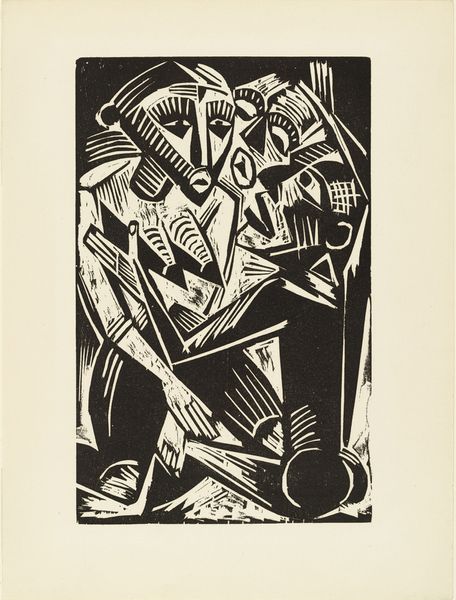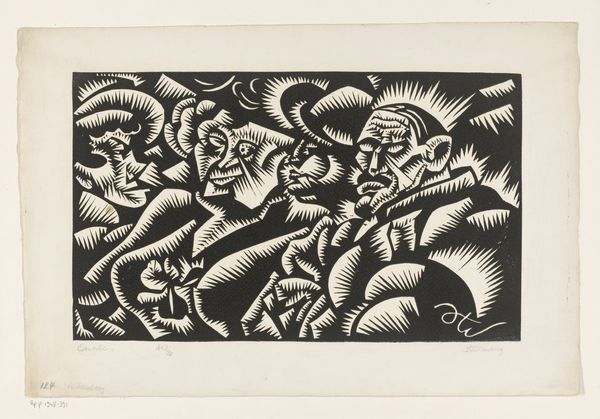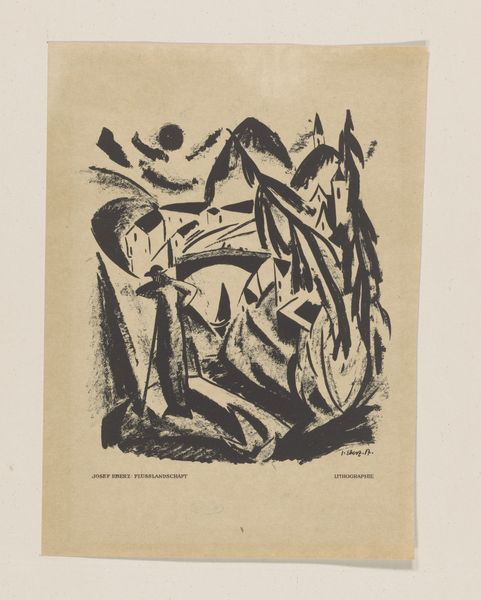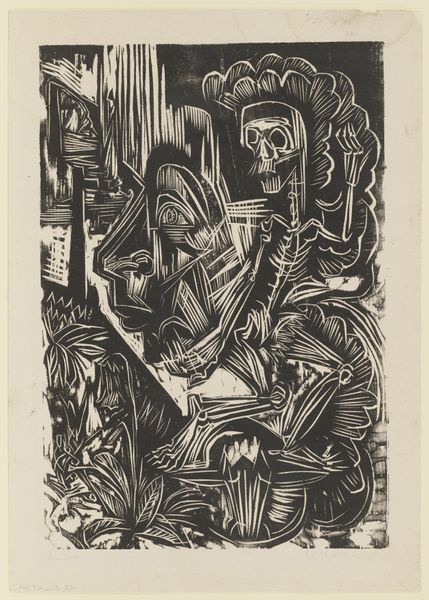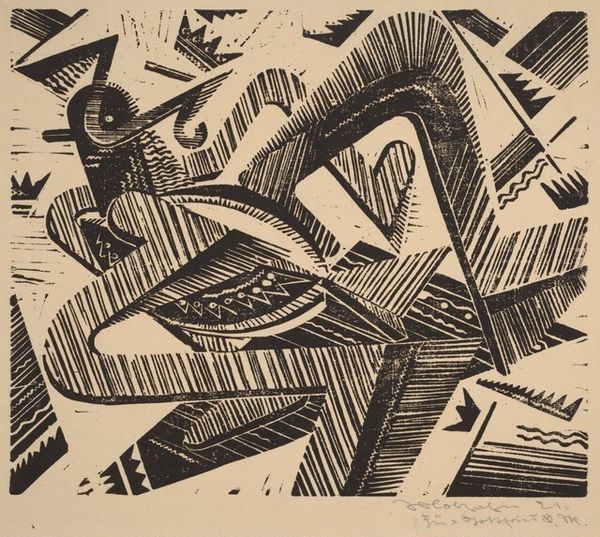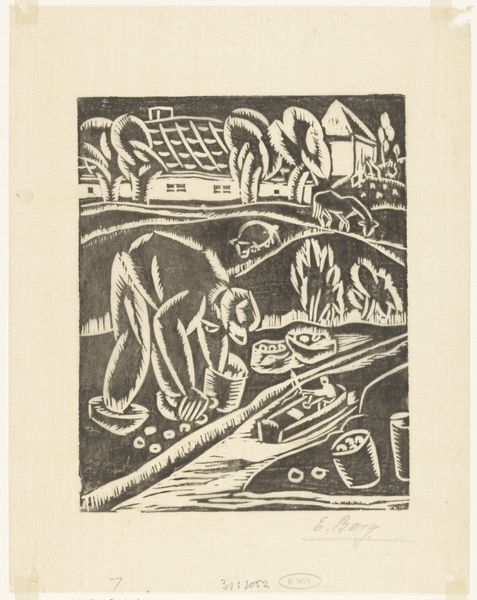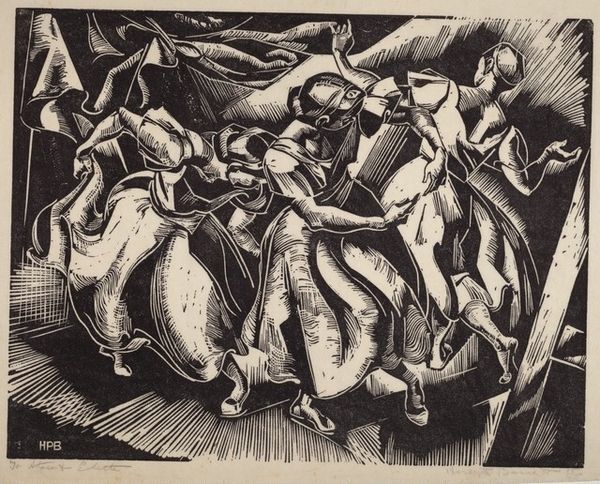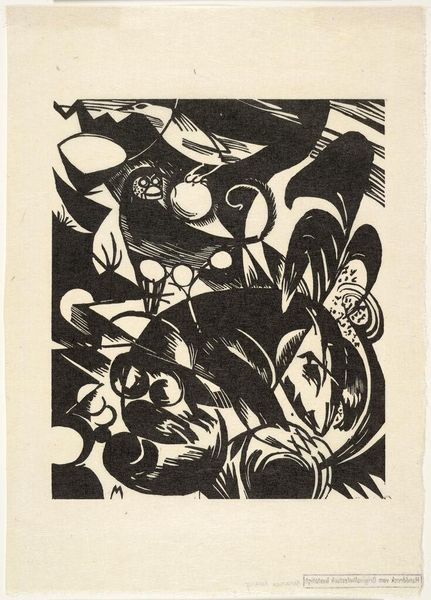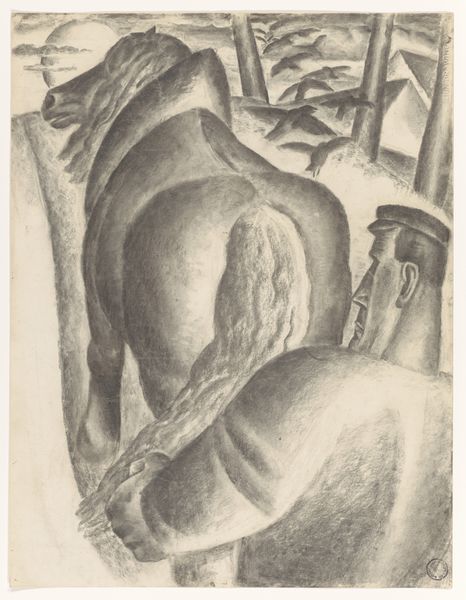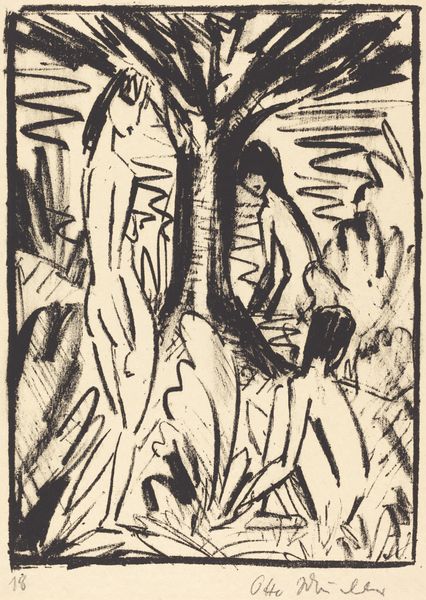
print, woodcut
# print
#
figuration
#
expressionism
#
woodcut
#
line
#
history-painting
Dimensions: height 347 mm, width 425 mm
Copyright: Rijks Museum: Open Domain
Curator: Bob Hanf's woodcut print, Golgotha, created between 1904 and 1937, offers a striking depiction of the crucifixion. It resides here at the Rijksmuseum. Editor: The starkness of the black and white immediately conveys a feeling of immense sorrow and spiritual agony. The composition, with its angular figures and almost chaotic background, contributes to the overall sense of despair. Curator: Absolutely. This work resonates deeply with Expressionist sensibilities, where emotional intensity takes precedence. We can analyze this in relation to other Expressionist explorations of religious suffering, seeing how Hanf utilizes the medium of the woodcut to amplify a sense of rawness and distress. Consider how historical depictions of this event often romanticize the suffering for didactic purposes. How does Hanf subvert that expectation, and what contemporary cultural factors influence that subversion? Editor: I'm drawn to the recurring motif of outstretched arms, echoing a plea for salvation or perhaps a gesture of surrender. Notice how the lines forming the sky and the earth seem to converge, almost trapping the figures. Symbolically, this may represent the inescapable fate of humanity, a shared destiny bound by mortality and pain. Curator: I see your point. And it makes me consider the socio-political climate of the early 20th century. How does Hanf's rendering engage with the increasing social anxieties that accompanied World War I? Are the chaotic lines and anguished figures representative of collective trauma and questioning faith amidst unprecedented violence and the emergence of mass society? Editor: That's compelling. Thinking of art history, I note the composition reminds me of late medieval woodcuts, such as those of Durer. This seems like it is speaking directly to tradition. Hanf updates this by adding raw emotion in an exploration of his faith, even perhaps doubt. It reflects on personal emotional impact in contrast to its historical role. Curator: So true! Thank you for contextualizing the medium's visual and historic function. Overall, the print creates space for audiences to contemplate the social weight and continued personal effect of that violence. Editor: Agreed. And these powerful symbols ensure its enduring relevance, inviting reflections on grief, faith, and the universal human condition across eras.
Comments
No comments
Be the first to comment and join the conversation on the ultimate creative platform.

